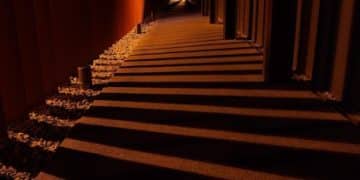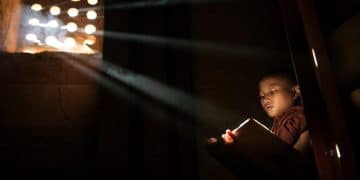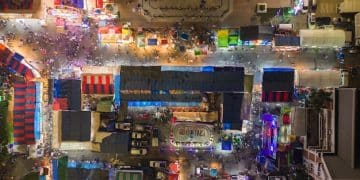Stage Combat Safety: Choreography & Risk Management in Theater

Stage Combat Safety: An Inside Look at Choreography and Risk Management delves into the meticulous planning and execution required to ensure the well-being of performers during simulated violence in theatrical productions. It highlights risk assessment, choreography, and safety protocols.
The simulated violence of stage combat can be thrilling for audiences, but behind the scenes, meticulous planning and stringent safety measures are paramount. Stage Combat Safety: An Inside Look at Choreography and Risk Management is essential for protecting performers. Understanding the choreography and risk management involved becomes critical in creating convincing and safe performances.
So how do professionals achieve realistic fight scenes while minimizing the potential for injury? Let’s explore the world of stage combat and explore the intricate dance between art and safety.
Understanding Stage Combat: Beyond the Fight
Stage combat is more than just hitting and kicking; it’s a specialized form of theatrical movement that requires extensive training and precision. It’s about storytelling through action, creating the illusion of violence while adhering to strict safety protocols. Stage combat draws from various martial arts, fencing, and theatrical techniques to effectively convey conflict.
The Role of a Fight Director
A fight director is crucial in ensuring stage combat safety. They choreograph the fight, instruct the actors, and oversee all safety aspects during rehearsals and performances. Their expertise is essential to creating convincing and safe fight choreography. They also adapt fights to the specific skill levels of performers.
- A fight director assesses risks and develops mitigation strategies.
- They ensure all performers are adequately trained in the techniques used.
- They supervise rehearsals, making necessary adjustments to the choreography.
- They communicate safety protocols clearly to the entire production team.
By having a skilled director, the production improves the quality of the show, while preventing injuries.
Risk Assessment in Stage Combat
A comprehensive risk assessment is the foundation of stage combat safety. This involves identifying potential hazards and implementing controls to minimize the likelihood and severity of injuries. This assessment is not a one-time event but an ongoing process refined throughout rehearsals and performances.
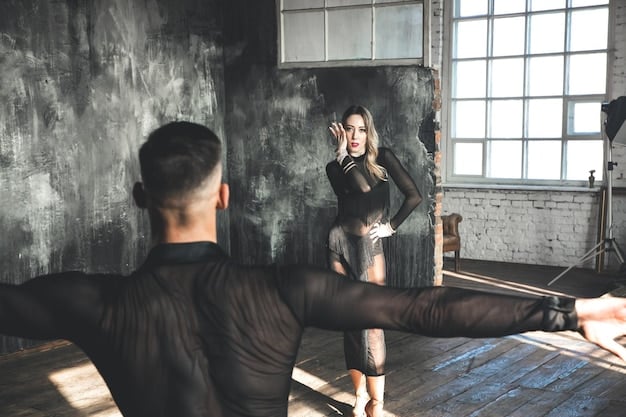
Identifying Potential Hazards
Hazards can range from the misuse of props to uneven stage surfaces. One should examine even the smallest details that may lead to injuries to ensure maximum safety. Recognizing and addressing these aspects are essential in maintaining a safe environment for performers.
Common hazards include:
- Improperly maintained or constructed props.
- Insufficient warm-up and conditioning.
- Lack of clear communication between performers.
- Failure to adhere to the choreography.
A detailed examination like this provides the best protection for all people involved with the production.
The Choreography Process: Crafting Safe and Believable Fights
Choreography in stage combat is about creating a sequence of movements that tell a story while prioritizing performer safety. The choreographer works closely with the director and actors to create fight scenes that are both dramatically effective and physically safe.
A well-constructed fight sequence considers:
- The skill level of the actors involved.
- The dramatic context of the scene.
- The physical limitations of the performance space.
- The types of weapons or props used.
Techniques and Illusions
Creating the illusion of violence often involves using specific techniques that create distance and control between performers. These techniques ensure that strikes appear impactful without causing actual harm. A few actions to keep in mind:
practices include:
These skills aid in making the scene look real, without actually harming any of the performers.
The Importance of Rehearsals and Conditioning
Sufficient rehearsal time is essential for performers to master the choreography and develop the necessary muscle memory. Rehearsals also allow the fight director to fine-tune the fight, address any safety concerns, and ensure that all movements are performed correctly.
- Regular rehearsals ensure performers are comfortable with the choreography.
- Conditioning exercises improve strength, flexibility, and stamina.
- Warm-up routines prepare the body for the physical demands of stage combat.
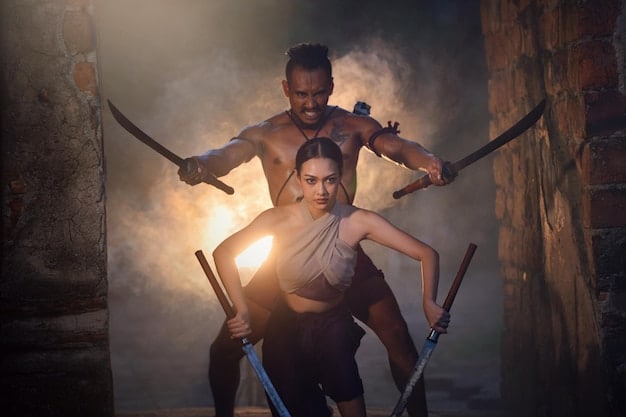
Injury Prevention Strategies
Preventative measure helps everyone to perform their best. Here are a few ways to do so:
Injury prevention strategies include:
- Proper warm-up and cool-down exercises.
- Use of protective gear such as padding and eye protection.
- Clear communication and cueing between performers.
Rehearsals keep the action sharp and the bodies in shape to lessen the chance of accidents.
Weapons and Props: Handling with Care
When weapons and props are part of a fight scene, additional safety precautions are necessary. Weapons should be carefully inspected before each performance to ensure they are in good working order. Actors must be trained in the proper handling and use of each weapon. In addition, the weapons and props must be accounted for and stored properly.
Safety considerations include:
- Using blunted or rubber weapons instead of sharp ones.
- Maintaining a safe distance when using projectile props.
- Storing weapons securely when not in use.
By training properly with weapons and props the chance of injuries decline.
Emergency Procedures and First Aid
Despite all precautions, injuries can still occur during stage combat. It is essential to have clear emergency procedures and first aid protocols in place to address potential incidents promptly and effectively. You never know when first aid may be needed, so being prepared is always the best defense.
Emergency procedures should include:
- A designated person responsible for calling emergency services.
- A well-stocked first aid kit readily available.
- Clearly marked evacuation routes.
By following these few simple steps you are better prepared for emergencies of all kinds.
| Key Point | Brief Description |
|---|---|
| 🛡️ Risk Assessment | Identifying and mitigating potential hazards. |
| 🤼 Choreography | Creating safe and believable fight sequences. |
| 💪 Rehearsals | Mastering choreography and conditioning. |
| 🤕 First Aid | Having procedures and kits available. |
Frequently Asked Questions
The main goals are to protect performers from injuries, create convincing fight scenes, and ensure all simulated violence is performed safely and effectively. Education is key.
A fight director choreographs the fight, teaches the actors, watches over the whole thing during practices, and makes sure everyone is secure until the show is done.
Risk assessment identifies potential hazards, allowing for the implementation of controls and preventative measures, reducing the likelihood of accidents and injuries during performances.
Techniques include knaps, controlling the distance, and looking at each other so the movements are synchronized to make the audience think it looks real without anyone getting hurt.
Rehearsals aid everyone in learning to move together, developing muscle memory, while conditioning develops their body physically. This way the actors and production team are prepared and able to lessen the damage from possible injuries.
Conclusion
Ensuring Stage Combat Safety: An Inside Look at Choreography and Risk Management is crucial in theatre to protect performers and create believable performances. By understanding the choreography and risk management, productions can showcase exciting fight scenes safely.
Through risk assessment, expert direction, safe choreography, and rehearsed execution safety is improved. Prioritizing these areas helps create impressive moments on stage while ensuring performers’ well-being.
